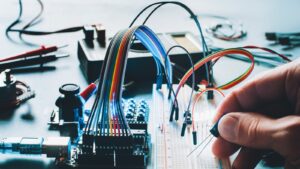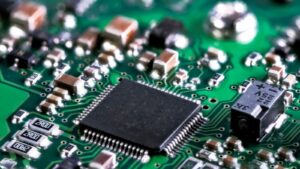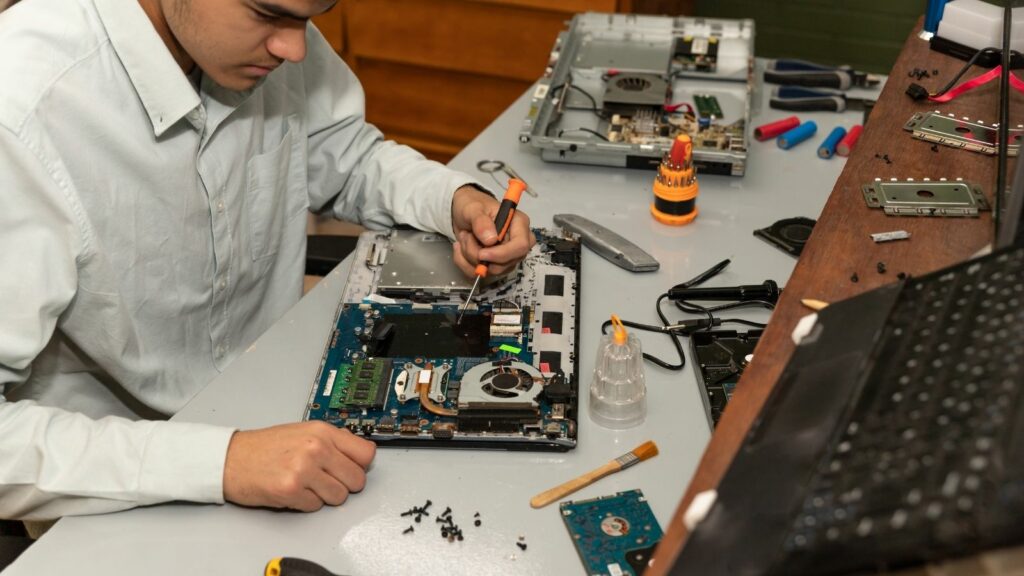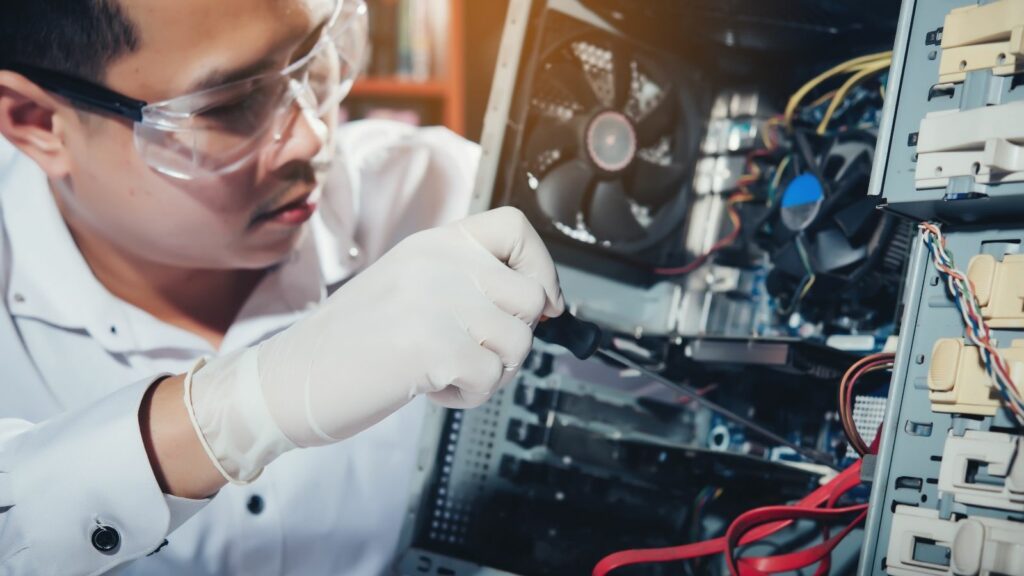”
Key Takeaways
- Driver Functionality: Device drivers act as intermediaries between the operating system and hardware, translating commands into a comprehensible language for devices, ensuring optimal performance and compatibility.
- Communication Protocols: Understanding protocols such as USB, Bluetooth, and Ethernet is vital for selecting suitable hardware, as each protocol offers different advantages in terms of speed, stability, and reliability.
- Automatic Installation: Many drivers install automatically when new hardware connects, streamlining the setup process, though manual installation may be necessary for older or custom devices.
- Challenges of Compatibility: Driver compatibility with operating systems poses significant challenges; ensuring updated and compatible drivers is crucial to avoid performance issues and communication failures.
- Resource Management: Effective resource management is essential as drivers consume system resources; optimizing driver performance helps improve overall system efficiency and responsiveness in various applications.
In today’s tech-driven world, seamless communication between computers and hardware devices is crucial. Whether it’s a printer, a camera, or a gaming console, the ability to connect and interact efficiently can make or break user experience. This is where specialized computer programs come into play, acting as the vital link that enables smooth dialogue between software and hardware.
These programs, often referred to as drivers or interfaces, translate commands and data into a language that hardware can understand. They ensure that devices function correctly and perform optimally, enhancing productivity and user satisfaction. Understanding how these programs work can help users troubleshoot issues, optimize performance, and appreciate the intricate dance of technology that powers everyday tasks.
Computer Program Allowing The Computer To Communicate With A Hardware Device
 Communication between computers and hardware hinges on the use of specialized programs. These programs, known as drivers, act as a bridge, translating the computer’s commands into a format that hardware devices can interpret. Each type of hardware, such as printers, graphics cards, or storage devices, requires its own specific driver to function correctly.
Communication between computers and hardware hinges on the use of specialized programs. These programs, known as drivers, act as a bridge, translating the computer’s commands into a format that hardware devices can interpret. Each type of hardware, such as printers, graphics cards, or storage devices, requires its own specific driver to function correctly.
Driver installation occurs automatically in many instances, such as connecting a new printer for the first time. Operating systems often detect the hardware and install the necessary drivers. However, manual installation might be required in specific scenarios, such as when using older equipment or custom hardware.
Data exchange operates through protocols that define rules for communication. Common protocols include USB (Universal Serial Bus), Bluetooth, and Ethernet. Each protocol has advantages and limitations, impacting the speed and reliability of communication. Understanding these protocols can help users select suitable hardware for their needs.
Each driver comprises several layers that facilitate intricate tasks. The device driver abstracts hardware-specific details from the operating system, enabling seamless integration. It ensures commands are sent and responses received without users needing to understand underlying complexities.
Communication issues may arise when drivers become outdated or incompatible with new operating system versions. Regular updates from manufacturers address these concerns, offering enhancements, bug fixes, and support for new features. Installing the latest driver ensures optimal performance and compatibility with current software.
Importance of Communication Protocols
Communication protocols serve as the foundation for efficient data exchanges between computers and hardware devices. Understanding the differences among these protocols enables users to make informed decisions about their hardware setups.
Serial vs. Parallel Communication
Serial communication transmits data one bit at a time over a single channel, allowing for reliable long-distance communication. Applications include USB and RS-232 standards. Parallel communication, in contrast, transmits multiple bits simultaneously across multiple channels, resulting in faster data transfer rates. It is commonly used in device interfaces like printers. Each method offers distinct advantages and disadvantages, such as speed versus complexity.
Wired vs. Wireless Communication
Wired communication utilizes physical connections, like Ethernet cables, for data transmission, offering superior stability and speed. This form suits environments where reliability is critical, such as data centers. Wireless communication, exemplified by Wi-Fi and Bluetooth, provides mobility and convenience but may experience interference or signal loss. Choosing between wired and wireless communication depends on the specific requirements of the application.
Key Features of a Computer Program Allowing the Computer to Communicate with a Hardware Device
Computer programs enabling communication with hardware devices exhibit several crucial features that ensure effective interaction. The following subsections detail these features.
Device Drivers
Device drivers serve as essential intermediaries between the operating system and hardware devices. Each driver translates the operating system’s instructions into a language the hardware can comprehend. Drivers also manage hardware resource allocation, ensuring efficient performance and preventing conflicts. Common functionalities of device drivers include:
- Automatic Installation: Many drivers install automatically when new hardware connects, simplifying setup processes.
- Compatibility Support: Drivers often provide compatibility with different operating system versions, ensuring broad functionality.
- Error Handling: Drivers can detect and report hardware and communication errors, helping users troubleshoot issues quickly.
- Performance Optimization: Updated drivers enhance hardware performance by fixing bugs, supporting new features, and improving communication efficiency.
APIs for Hardware Communication
Application Programming Interfaces (APIs) play a pivotal role in facilitating hardware communication. APIs provide standardized methods for software applications to interact with hardware components. Key characteristics include:
- Abstraction Layer: APIs abstract complex hardware interactions, allowing developers to communicate with devices without needing to manage low-level details.
- Standardization: APIs enable consistency across different hardware types, making it easier for developers to create applications that work with various devices.
- Functionality Extension: APIs allow for additional features, such as monitoring hardware status or executing specialized commands, enhancing overall user experience.
- Protocol Integration: APIs often support multiple communication protocols, such as USB or Bluetooth, enabling versatile applications across different devices.
These features contribute significantly to the efficiency of computer programs in facilitating seamless communication with hardware devices.
Use Cases and Applications
Computer programs that enable communication with hardware devices find applications across various sectors. Their effective interaction enhances efficiency, productivity, and usability in diverse environments.
Industrial Automation
Industrial automation relies heavily on computer programs for seamless communication between control systems and machinery. Programmable Logic Controllers (PLCs) utilize specialized drivers to connect with sensors, actuators, and other devices, ensuring accurate data exchange and control execution. For instance, in manufacturing plants, communication protocols like Modbus and CANbus facilitate real-time monitoring and control of equipment, optimizing performance while reducing downtime. Additional applications include automated assembly lines, where robots equipped with specific drivers communicate with central control systems to execute tasks with precision and speed.
Consumer Electronics
 Consumer electronics benefit significantly from computer programs that bridge communication with various devices. For example, Bluetooth and Wi-Fi drivers enable smartphones, tablets, and smart home devices to connect and interact seamlessly. Through Application Programming Interfaces (APIs), developers can create applications that control hardware features, like adjusting temperature settings in smart thermostats or streaming music to wireless speakers. The integration of computer programs in audio-visual devices ensures high-fidelity sound and image processing, enhancing the overall user experience. Additionally, devices including printers and scanners rely on drivers to facilitate proper communication with computers, ensuring efficient printing and image capture processes.
Consumer electronics benefit significantly from computer programs that bridge communication with various devices. For example, Bluetooth and Wi-Fi drivers enable smartphones, tablets, and smart home devices to connect and interact seamlessly. Through Application Programming Interfaces (APIs), developers can create applications that control hardware features, like adjusting temperature settings in smart thermostats or streaming music to wireless speakers. The integration of computer programs in audio-visual devices ensures high-fidelity sound and image processing, enhancing the overall user experience. Additionally, devices including printers and scanners rely on drivers to facilitate proper communication with computers, ensuring efficient printing and image capture processes.
Challenges and Limitations
Challenges and limitations exist when dealing with computer programs that enable communication with hardware devices.
Driver Compatibility
Driver compatibility poses a significant challenge. Different operating systems require specific drivers tailored for their unique architectures. Incompatibility can lead to performance issues or even complete communication failures. Ensuring that drivers are compatible with the latest operating system updates remains a persistent hurdle.
Hardware Variability
Hardware variability introduces complications as well. Various manufacturers utilize distinct communication protocols and design intricacies. Discrepancies in hardware design may result in drivers not functioning optimally across different devices. This variability necessitates continuous updates and refinements by developers to maintain broad compatibility.
Protocol Limitations
Protocol limitations can restrict the full potential of communication. Some protocols offer lower data transfer rates, which may become a bottleneck in high-speed applications. Certain wireless protocols face interference, impacting connection stability and reliability. Understanding these limitations is crucial for selecting appropriate hardware for specific applications.
Performance Overhead
Performance overhead might occur due to the abstraction layers that drivers and APIs implement. While these layers facilitate user-friendly interactions, they can also introduce latency, subsequently affecting real-time performance. This overhead can be especially problematic in applications requiring immediate responsiveness.
Legal and Security Concerns
Legal and security concerns are critical. Proprietary drivers may limit access, preventing third-party enhancements or custom developments. Additionally, the prevalence of security vulnerabilities in outdated drivers poses risks to system integrity. Regular updates and security audits are essential to mitigate these risks.
Resource Management
Resource management issues can arise as well. Drivers consume system resources, affecting overall performance, especially in environments with limited hardware capabilities. Striking a balance between resource usage and performance is vital for optimal operation.
Recognizing and addressing these challenges and limitations enhance the effectiveness and reliability of computer programs that communicate with hardware devices, ensuring smoother interactions and improved user experiences.
Smooth Communication And Functionality Across Various Platforms
The integration of computer programs with hardware devices plays a crucial role in modern technology. By utilizing drivers and APIs, these programs ensure smooth communication and functionality across various platforms. Users benefit from understanding communication protocols and driver management, as this knowledge enhances device performance and troubleshooting capabilities.
Addressing compatibility issues and keeping drivers updated is essential for maintaining optimal operation. The challenges associated with these programs highlight the importance of a proactive approach to technology management. As users navigate the complexities of hardware communication, they can achieve greater efficiency and productivity in their daily tasks, ultimately leading to a more satisfying user experience.
“



